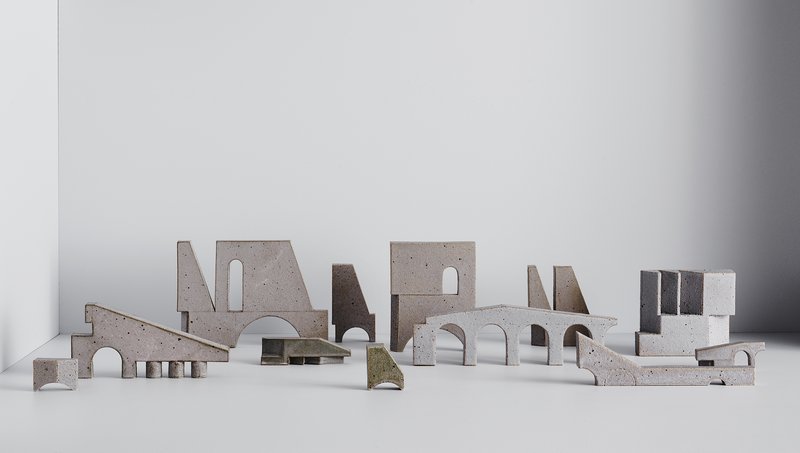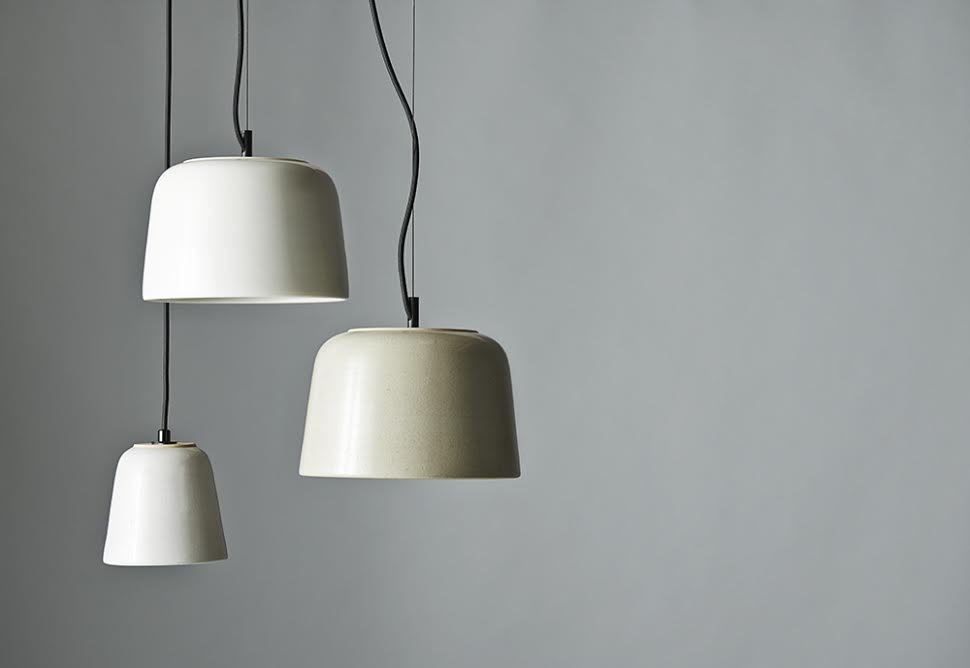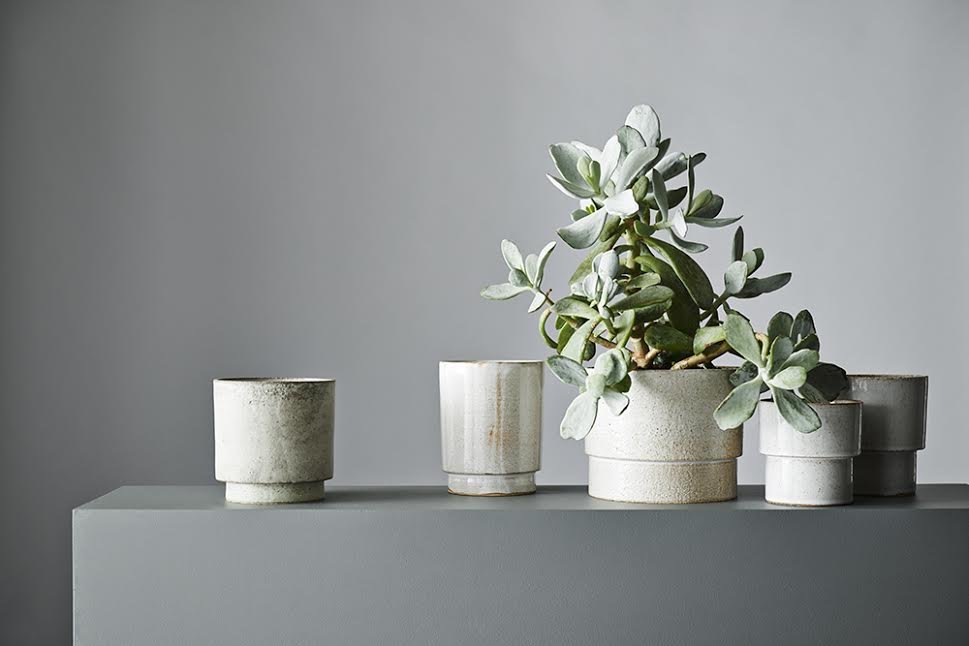Image: Bruce Rowe, Structures, 2015 - 2016
How vital is experimentation to Anchor Ceramics?
Experimentation is essential to the ongoing development of the range of studio’s activities and sits at the core of the design and making process.
How do you create capacity to experiment with material technique and your practice/business model?
The capacity to experiment is embedded into Anchor’s design process through two drivers; no expectations of outcome and the freedom to fail. This is supported with time, money, collaboration with both people and technology, testing, recording and reviewing; all of which are vital and often interdependent. Without a willingness to accept the condition that the endeavour may not amount to anything, the endeavour itself is meaningless and the value to our design process is limited. No amount of resource allocation can replace a willingness to accept that the experiment may falter. The other side of this coin is the possibility that the experiment will succeed and open a door that was previously closed, or, even better, lead to one that was previously unseen.
The growth of the studio over the last few years has also led to an experimentation with the business model. Once the studio grew beyond the capacity of the individual, it was necessary to look at how the business needed to be structured to support its development and growth. Some things have worked well in this regard and others haven’t; but ultimately it was a willingness to embrace uncertainty that has helped the studio develop and flourish.
In your experience what benefits and tensions exist when working across multiple disciplines i.e. architecture and ceramics (craft/design)?
Architecture is a creative and deeply rewarding endeavour, but it is also increasingly screen-based, administratively weighted, and risk adverse. The increasing distance between designing and making, both in education and in practice was challenging. In many ways, this professional disconnect between designing and making is what led me to freely explore ceramics in the first place – a desire to use my hands and reconnect with material in primary way.
Today, the directness of the feedback loop between designing and making is both immediate and constant. We test and prototype with physical and digital models, drawings and directly with the material. We utilise technologies such as 3D printing, CNC machining and other digital 3D modelling tools, but not as means unto themselves. We’re not 3D printing with clay, we are using 3D printing tools that shape clay in a particular way. The amalgamation of the collaborative nature and contemporary tools of architecture with the traditional tools of the studio potter has generated a field of enquiry that suggests a multiplicity of viewpoints is possible. And that the collaboration between disciplines perhaps considered disparate, offers a whole new way of considering design practice.
What do you feel are the key limitations (culturally or structurally) currently faced by Australian craft practitioners and designers? How do you think they may be overcome?
There is an expectation on a societal level, that the products we buy should be cheap, quick, readily available and re-purchased when fashion dictates. This, of course, is a generalisation to which there are exceptions, but there are many who will happily purchase a poorly made, inaccurate copy of well designed object if they can have it today and at a fraction of the price of the original. This runs counter to the good design principles such as longevity, making locally with love and care, using quality materials and a ‘buy well, buy once’ ethos that sits at the heart of a design studio like Anchor.
The hunger for more for less has driven many of our local manufacturing industries offshore and with it a host of skills and allied services that are no longer accessible in this country. Anchor relies on the production capacity of a network of specialist makers to meet the demand for its products, without whom the viability of the business would be threatened. Keeping the studio's production in Australia means we can support these production studios to grow as we do. Within our own studio, we employ young practitioners, the skills and knowledge base of Anchor built upon and transferred; we buy raw materials, services and products from like-minded local businesses and we collaborate with design firms, architects and a host of other creatives on all kinds of projects - each with its own life that requires the broad endeavor of yet more people. This is not just about the sustainability of the design and craft sector; when you widen the lens and consider the connected nature of all things, the health of one industry affects all others.
There’s no denying the significant, financial cost that comes with committing to a model of local design and small-scale manufacturing. The mention of the scale of our manufacturing is important. Many smaller scale businesses like Anchor slip between the cracks of traditional industry funding and are directed towards arts based funding models which are ill-suited to the needs of a design and manufacturing business. Tax incentives or no interest loans, particularly for the purchase of equipment and support for on the job training of young practitioners would make a significant difference to the way in which Anchor will develop in the years to come.
Increased advocacy and targeted awareness building of the value and importance of Australian design, craft and manufacturing by the various representative organisations across the tiers of government and the broader community is also needed to help counter some of these limitations.
Is there an ethical and/or philosophical model to Anchor, and can you explain how that guides practical decisions and translates in practice?
Yes. Anchor is built on a model that places well designed, high quality products that are made by hand with love and care at the heart of its endeavor. Our design process is collaborative, experimental, iterative and rigorous and we exploit both contemporary and traditional technologies and tools as our projects demand. We’re passionate about building a local design and manufacturing environment that is sustainable and robust; one that nurtures early career practitioners and continues to provide support for those studios longer established. Practically, this ethos guides almost every decision the studio makes; from where to purchase raw materials to the development of new products.
What impact does your workspace (within Pop+Scott) and proximity to other creative businesses and artists have on your practice and business?
There is a practical, physical sharing of space, equipment and knowledge that has the obvious, direct benefits of shared costs and direct pathways to solving the day to day problems of making an object, be it furniture or ceramics or illustration or any of the things produced under the Pop & Scott roof. Looking more broadly at the collective of creative businesses however, the impact is less direct, but in many ways more powerful, in that we have become a community in the true sense of the word; a community of practice and support that shares lunch each day and a drink on Friday afternoon, but that also shares an understanding of the risks and of the rewards that our studio based practices offer.
As a successful craft/design practice, do you currently or will you in the future offer education or training opportunities eg. mentorship, apprenticeship, work experience, workshops? If so, how and why?
As a design studio with a direct production capacity, we straddle both design and manufacturing within our practice. The early career practitioners who work with us at Anchor, do so generally to support their own studio based practices. They have been employed for their skill base and good fit within the studio, so in many ways, their education and ongoing development within the Anchor studio comes from both the capacity to practice their craft on a daily basis and the exposure to a design based practice model.
We are approached on a daily basis to offer unpaid internship opportunities to students and recent graduates of both ceramics and design based programs. The studio operates on the basis that everyone who works at Anchor is paid well for their endeavor and anything else is exploitative despite the learning opportunity it may well provide. And so to date, we have not engaged anyone in an unpaid internship or apprenticeship capacity. With the demise of so many ceramics programs around the country, this may well be something to review in the near future. As mentioned earlier, any such training opportunity would need to be undertaken in a structured way and with the appropriate level of support to ensure that such an undertaking didn’t detract from the activity of the studio and that the desired learning outcomes could be maintained.
Bruce Rowe’s upcoming exhibition Structures 2015 – 2016 opens May 18 in Sydney, and May 19 in Melbourne. You can read more about his work and practice in a previous feature in the Design Files here.









